How children are still suffering the trauma of Trump’s family separation policy
‘They told us to behave or we’d have to stay there forever.’ Michael E Miller speaks to the immigrant children who are still suffering the trauma of the Donald Trump’s separation policy after finally being reunited with their families
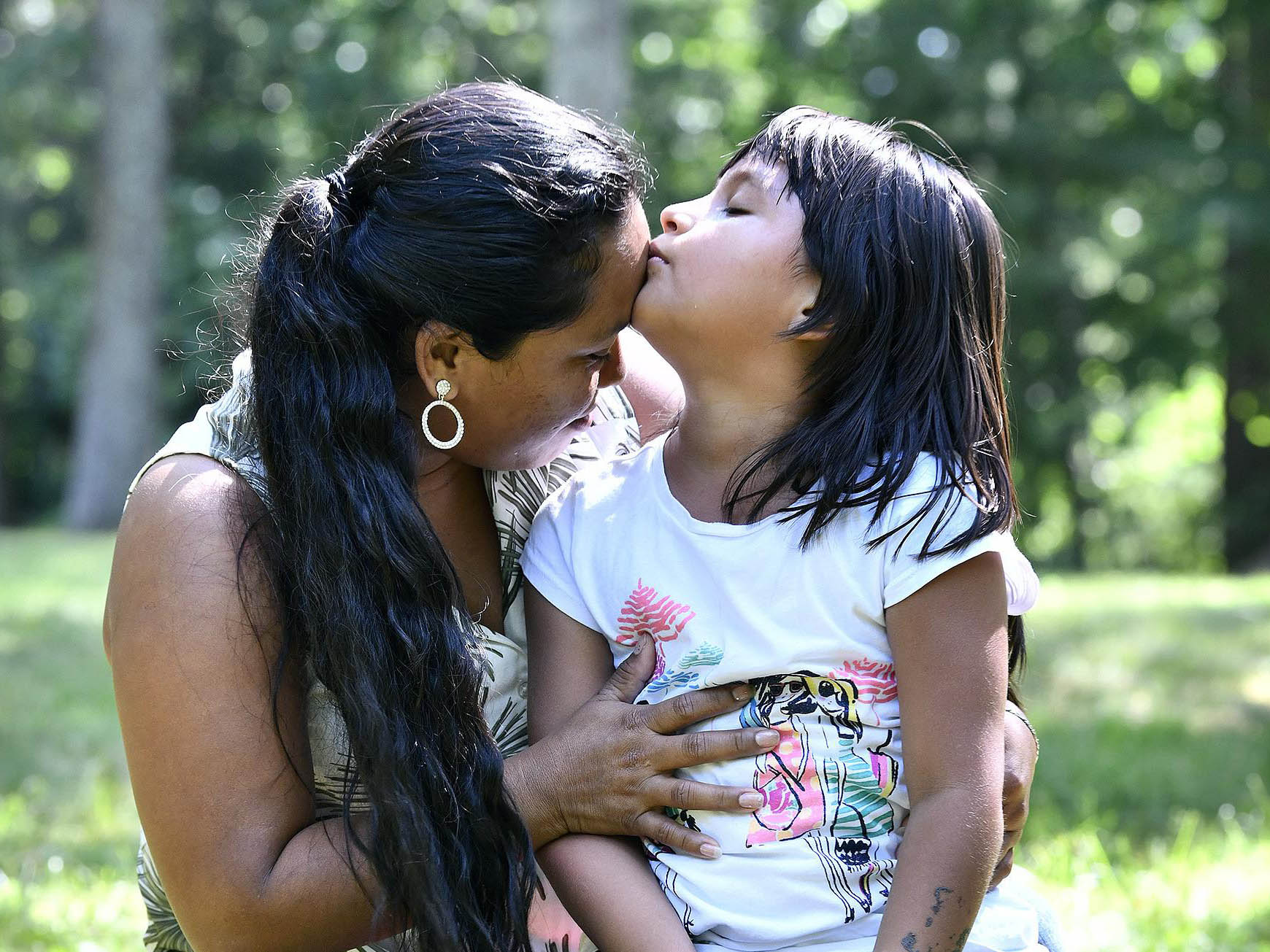
Your support helps us to tell the story
From reproductive rights to climate change to Big Tech, The Independent is on the ground when the story is developing. Whether it's investigating the financials of Elon Musk's pro-Trump PAC or producing our latest documentary, 'The A Word', which shines a light on the American women fighting for reproductive rights, we know how important it is to parse out the facts from the messaging.
At such a critical moment in US history, we need reporters on the ground. Your donation allows us to keep sending journalists to speak to both sides of the story.
The Independent is trusted by Americans across the entire political spectrum. And unlike many other quality news outlets, we choose not to lock Americans out of our reporting and analysis with paywalls. We believe quality journalism should be available to everyone, paid for by those who can afford it.
Your support makes all the difference.When the eight-year-old stepped off a plane here earlier this month with freshly cut bangs and a shelter-issued sweatsuit, she was met by crowds and television cameras and finally, in a carpeted airport conference room, by the mother who had been taken from her two months earlier at the border.
But now, a day after that joyous reunion, the girl from Guatemala is shoving a toddler who is trying to give her a hug and a kiss at a welcoming party in the suburbs. Now she is screaming and crying and telling the boy to stay away.
This is what two months in a Texas shelter has taught Sandy Gonzalez.
“They always kept the boys and the girls separate,” the second-grader explains. “And they punished us if we went near each other.”
Under court order, federal officials have begun to return the more than 2,500 immigrant children taken from their parents under the Trump administration’s short-lived family separation policy. Across the country, mothers and fathers are slowly being reunited with the children they last saw being led away by Border Patrol agents weeks or months ago.
Experts warn that many of these children may be deeply traumatised by their experiences. Their voices have seldom been heard during the frenzied debate over family separation.
“I felt like a prisoner,” says Diogo De Olivera Filho, a nine-year-old from Brazil who spent five weeks at a shelter in Chicago, including three weeks in isolation after getting chickenpox. When he got lonely and left his quarantined room to see other kids, he says the shelter put up a gate to keep him in. “I felt like a dog,” he says.
He and Sandy are among the six children recently released from the shelters who described to us what their time separated from their parents was like.
One 11-year-old boy from Guatemala who spent six weeks in the same Chicago shelter as Diogo says he had to ask permission to hug his sister. Some of the children say they now suffer from nightmares. A few, including Sandy, have had difficulty trusting their parents again.
Most of the children are reluctant to talk about what they went through while they were detained.
“I don’t want to remember,” says one 10-year-old, who recounted watching an out-of-control kindergartner get injected with something after he misbehaved in class.
Parents sometimes learned the details of their kids’ time in custody by listening to them talk to us.
Sandy was reunited with her mother on 5 July after 55 days at Southwest Key Combes, a shelter in Harlingen, Texas, that was caring for about 60 kids. Some had been separated from their parents; some had crossed the border on their own.
For Sandy, it was a place of sorrow, fear and scoldings.
“They told us to behave,” she says, “or we’d be there forever.”
***
When Angelica Gonzalez-Garcia decided to flee her abusive husband in eastern Guatemala earlier this year, she left it to her daughter, then 7, to decide whether to stay behind with her grandparents.
“I want to go with you, Mommy,” she says
Sandy replied.
Gonzalez-Garcia says she didn’t know about President Donald Trump’s new “zero tolerance” policy and the push to separate children from their parents to discourage families from coming to the United States.
On 9 May, shortly after illegally crossing the border between Mexico and Arizona, Sandy and her mother suddenly found themselves surrounded by Border Patrol vehicles. Gonzalez-Garcia told them she was seeking asylum.
They were taken in the back of a pickup truck to a Border Patrol holding facility known as a hielera, or icebox, and put in a room with a few dozen other migrants and one toilet, surrounded by a low partition.
There were people there who only spoke English, and they always said to us, ‘No touch, no touch’
Sandy was too embarrassed to use the toilet. She and her mother slept on a plastic mat on the floor with two other people. They were given thin metallic mylar blankets for the cold.
“They didn’t give us anything (else) to cover us,” recalls the girl with almond-shaped eyes and gaps between her teeth, crossing her arms as if shivering at the thought. “They gave us soup, just soup, and some cookies and juice.”
After a day in the hielera, Gonzalez-Garcia says Border Patrol agents told her they were going to take her daughter away and deport Gonzalez-Garcia. As they asked her to sign documents authorizing the separation, one agent wished her a Happy Mother’s Day, which is celebrated in Guatemala on 10 May.
That night, Gonzalez-Garcia tried to prepare Sandy for what was coming.
“I told her it was like a vacation, she’d be playing, there’d be dolls, and ballgames and pizza” – Sandy’s favorite food, recalls Gonzalez-Garcia. “I told her not to cry.”
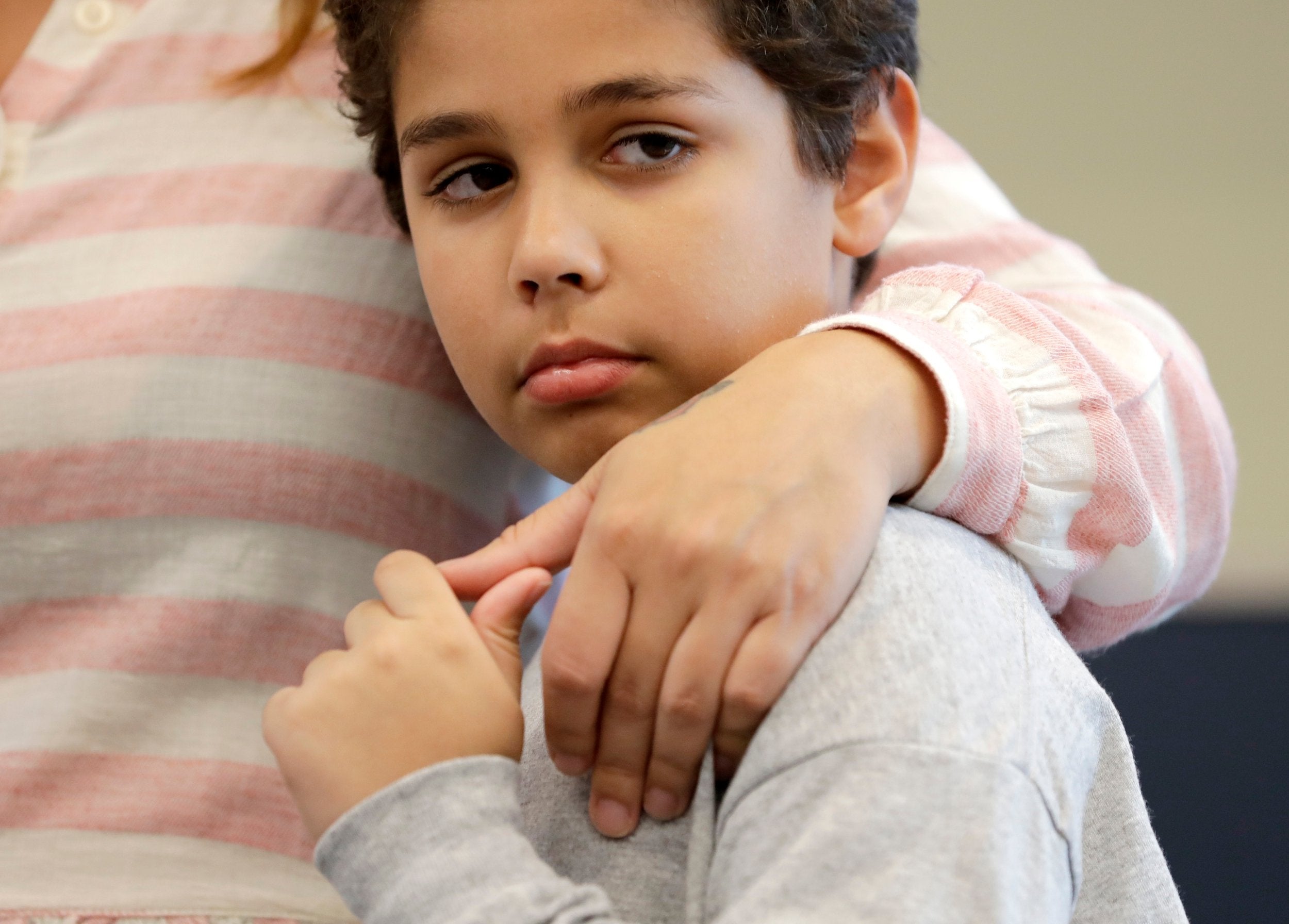
Before dawn on 11 May, Border Patrol agents took mother and daughter to a trailer with showers. Gonzalez tried not to get emotional as she bathed her girl for what she thought might be the last time, then dressed her in a baggy blue uniform.
“She brushed my hair, she gave me a kiss and she hugged me,” Sandy remembers.
When it came time to go, however, the girl tried to hide under the mylar blankets.
“Don’t tell them I’m under here,” Sandy said, according to her mother. “They can look for me but they won’t find me.”
But they did find her. And suddenly she was alone for the first time in her life.
They told me, ‘If you keep doing that, you’re going to have to stay here until you’re 18’
“They put me in a car, then two airplanes, then another car, then another,” she says. She cried for much of it. “I was so sad,” Sandy says.
When Sandy arrived at the Southwest Key shelter, the first thing she remembers is being lined up with other new kids and being told the rules: no touching, no talking to boys, lights on at 6.30am, lights out at 8pm.
For a girl who’d grown up running freely around her neighbourhood in Guatemala, playing and asking tourists for candy, the restrictions were a shock.
She says some of the shelter employees were nice, but others shouted “callense”, or “be quiet”, at her and the other kids. Sandy says she had trouble falling asleep and the food tasted “nasty”.
She spent part of each day in school, but was put in a class that was too advanced for her. “It was stuff for older kids,” she says.
Jeff Eller, a spokesman for Southwest Key, one of the country’s biggest shelter providers, says he can’t discuss Sandy’s account of her time in custody.
“We have appropriate touching policies in place, so we can keep all kids safe,” he says. “We have a 20-year history of providing compassionate childcare and we’re proud of what we do.”
More than two weeks passed before Sandy’s mother was able to call her from an ICE detention centre in Colorado.
“When she heard my voice she stayed quiet,” Gonzalez-Garcia recalls. “She didn’t say anything. I asked how she was, and all she said was ‘Fine’.”
When the girl did start talking, what she said startled her mother. Her birthday on 19 May had passed without anyone at the shelter noticing, she says. The staff shouted at the children, she tells her mom, and a boy had kicked her in the face during recess.
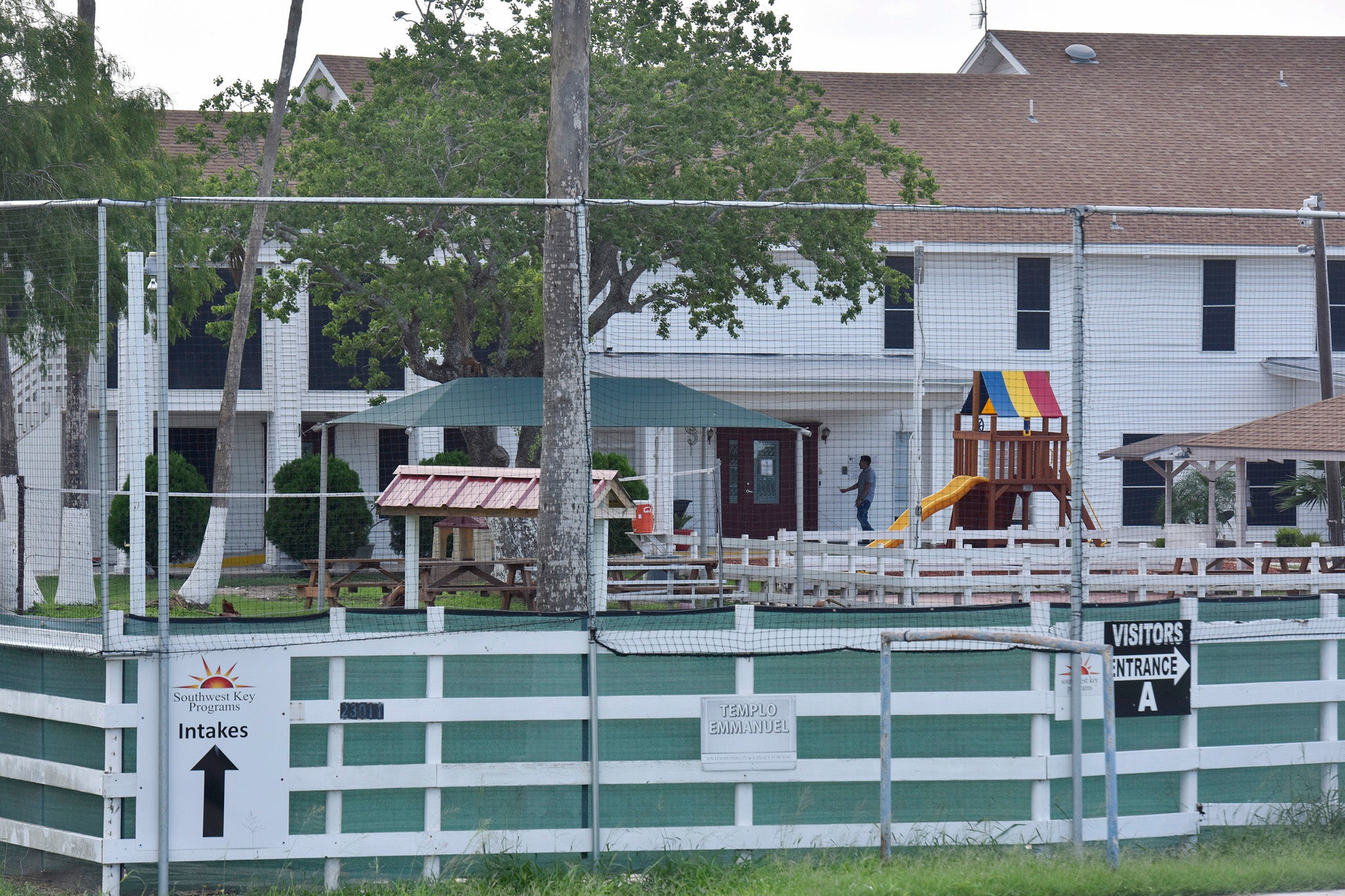
Sandy kept asking her mother why she hadn’t come to get her, Gonzalez-Garcia recalls. The 31-year-old promised her daughter she’d come as soon as she could, and give her a birthday party with pizza and gifts.
Sandy also tells her mom that she had conjunctivitis and been put into a room by herself. (“When a child enters with or contracts a communicable disease,” Eller says, “we make sure to minimise their contact with other children with guidance from medical professionals.”)
Asked what she did all day alone in a room, Sandy says she played a memory game with cards. The only other game was checkers.
“And that was for two people,” she says, “so I couldn’t play.”
***
Like Sandy, all the children who spoke to us struggled to cope with being ripped away from their parents and then placed in shelters filled with unfamiliar adults and unfamiliar rules.
“There were people there who only spoke English, and they always said to us, ‘No touch, No touch,’ ” recalls Leidy Veliz, a pencil-thin nine-year-old from Guatemala who was sent along with her brother to a Chicago shelter called Casa Guadalupe, run by a nonprofit called Heartland Alliance.
Her brother, Victor, 11, says he had to ask permission to hug Leidy at the shelter, a cluster of three houses in the suburbs that housed about 60 kids.
“You always had to be ‘an arm’s length’ from everyone,” Victor says as the siblings repeated in unison the phrase in Spanish: “Un brazo de distancia. Un brazo de distancia.”
Girls were kept in a separate house, so Victor only got to see his sister twice a day during recess.
They would look over everything in your room and if it wasn’t perfectly clean, they’d take away your blankets
Victor said the children were told there were “hidden cameras” everywhere except the bathrooms and bedrooms, so any misbehaviour would be caught on video.
He and Leidy say they feared running afoul of the rules and being reported – a worry echoed by all the children we interviewed.
They also feared other punishment. Victor says he was once “dragged” inside by two adult male shelter employees after lingering on the soccer field – his most painful memory from the shelter.
Diogo, the nine-year-old from Brazil, says he was used to sleeping late but that habit quickly got him in trouble at Casa Guadalupe.
“They told me, ‘If you keep doing that, you’re going to have to stay here until you’re 18’,” he says.
Diogo and another Brazilian boy he befriended, Diego Magalhaes, 10, say they saw a troubled five-year-old boy repeatedly injected with something that made him fall asleep at his desk. The boy’s father had been deported, Diego says, and he often melted down during the daily classes the immigrant children were given.
“I was very scared,” Diego says. “I thought they were going to inject me, too.”
Asked about the children’s accounts, Heartland Alliance said in a statement that it takes concerns about its shelters “extremely seriously”.
“We have extensive policies, procedures, and standards of care that guide our trauma-informed approach to ensure the safety and well-being of all children in our care,” the statement says. “While this does include daily routines and structure, age-appropriate chores, and practices to prevent the spread of communicable illnesses, we understand how these practices may be experienced by young children who are already suffering emotionally from being apart from those they love most.”
Mark Weber, a spokesman for the Department of Health and Human Services, which oversees the agency responsible for the shelters, says it couldn’t comment on specific children or cases, but that “our focus is always on the safety and best interest of each child”.
“These are vulnerable children in difficult circumstances, and HHS treats its responsibility for each child with the utmost care,” he says. “Any allegation of abuse is taken seriously” and, after being investigated by the department’s Office of Refugee Resettlement, “appropriate action is taken”.
One day, Diego says he was playing soccer on a concrete basketball court when he fell and felt his arm crunch. He says regular shelter employees – not doctors or nurses – examined him, told him his arm was fractured and then gave him a temporary cast that he wore for weeks.
When my mom sang to me I was crying because it was the first time that we didn’t celebrate my birthday together
“It still hurts,” Diego says, running his fingers over the injury.
After Diogo got chickenpox, he was moved from his room with three other boys to a playroom converted into a makeshift infirmary. There were toys and video games, he says, but the video games didn’t work.
“They were just for show,” he says. There were no other kids there and often no adults either, he says. When he got bored and left the room, he says employees scolded him and added the gate.
“They told me I couldn’t get out because I’d infect everybody,” adds Diogo, who spent almost three weeks in isolation.
He and the other children say they were assigned cleaning duties at Casa Guadalupe. In addition to washing dishes and helping serve food, they had to scrub the bathroom at least twice a week.
“They didn’t even give us gloves to clean the toilet,” Diego says.
Shelter workers were particularly worried about lice, Leidy recalls.
“They would look over everything in your room,” she says, “and if it wasn’t perfectly clean, they’d take away your blankets.”
While at the shelter, Diogo turned nine with no fanfare. His mother, Lidia Souza, had been released from ICE custody two weeks earlier. She called him on the phone, told him not to cry and promised him a party and a Nintendo – one that worked – for a present. He begged her to hurry.
When Victor turned 11 at the shelter, his mother called from a detention centre in Eloy, Arizona, and sang him the Latino birthday song, “Las Mananitas”.
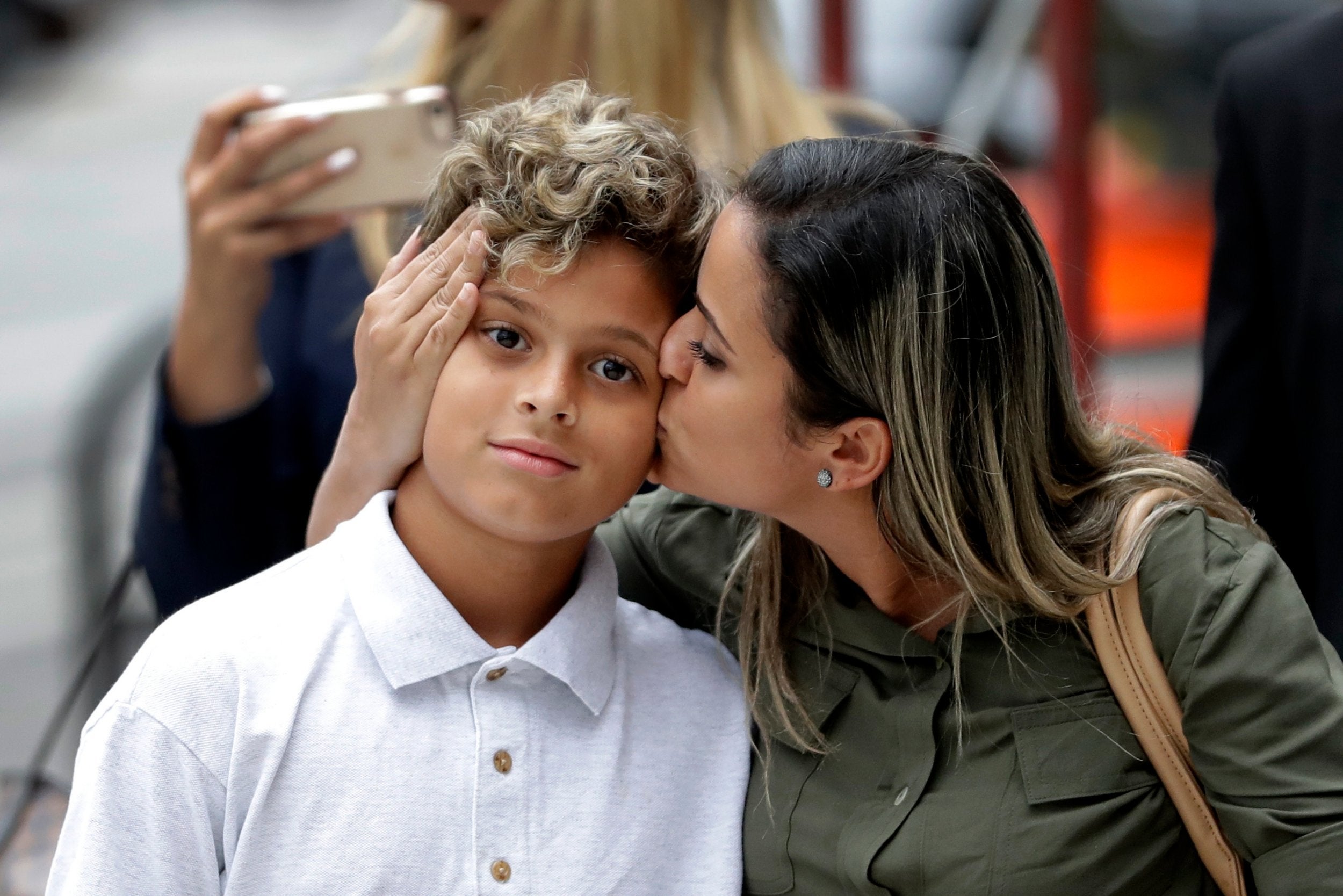
“When my mom sang to me,” he says, “I was crying because it was the first time that we didn’t celebrate my birthday together.”
By the time some of the children were able to speak to the parents from whom they’d been taken, they felt like strangers to one another.
When Diego’s mother, Sirley Silveira Paixao reached him in the shelter shortly after her own release from ICE detention, the boy didn’t recognise her voice.
“Hi,” he saod. “Who is this?”
“Diego,” she recalled answering, “this is your mom.”
***
When Sandy arrived at her new home in the Boston suburbs, she saw leafy trees and thick grass and an expansive yard. Inside the main house, she marvelled at the host family’s piano, which she had only seen in movies.
But inside the small, two-storey guesthouse where she and her mother would stay, the girl could not shake off the two months of conditioning in the shelter. She refused to sleep upstairs in the bed.
“The boys slept upstairs” at the shelter, she explains.
So mother and daughter slept on a pillow downstairs by the bay window, where the girl dreamed she was back in Guatemala, at her cousin’s funeral. He’d been killed just before they left.
When Sandy woke up shouting and shaking, her mother says, Gonzalez-Garcia tried to calm her.
“It was like she didn’t recognise me,” Gonzalez-Garcia recalls.
The next day Gonzalez-Garcia threw her the pizza party she had promised. There were dolls and balloons featuring characters from her favourite movie, Frozen.
But two days later, during a trip to the park, the girl threw a fit when her mother strayed from her side to talk to some friends.
“You don’t love me,” Sandy screamed before running off. “You don’t want me.”
Gonzalez-Garcia says she is planning to take Sandy to a psychologist this week. And there have been small signs of progress.
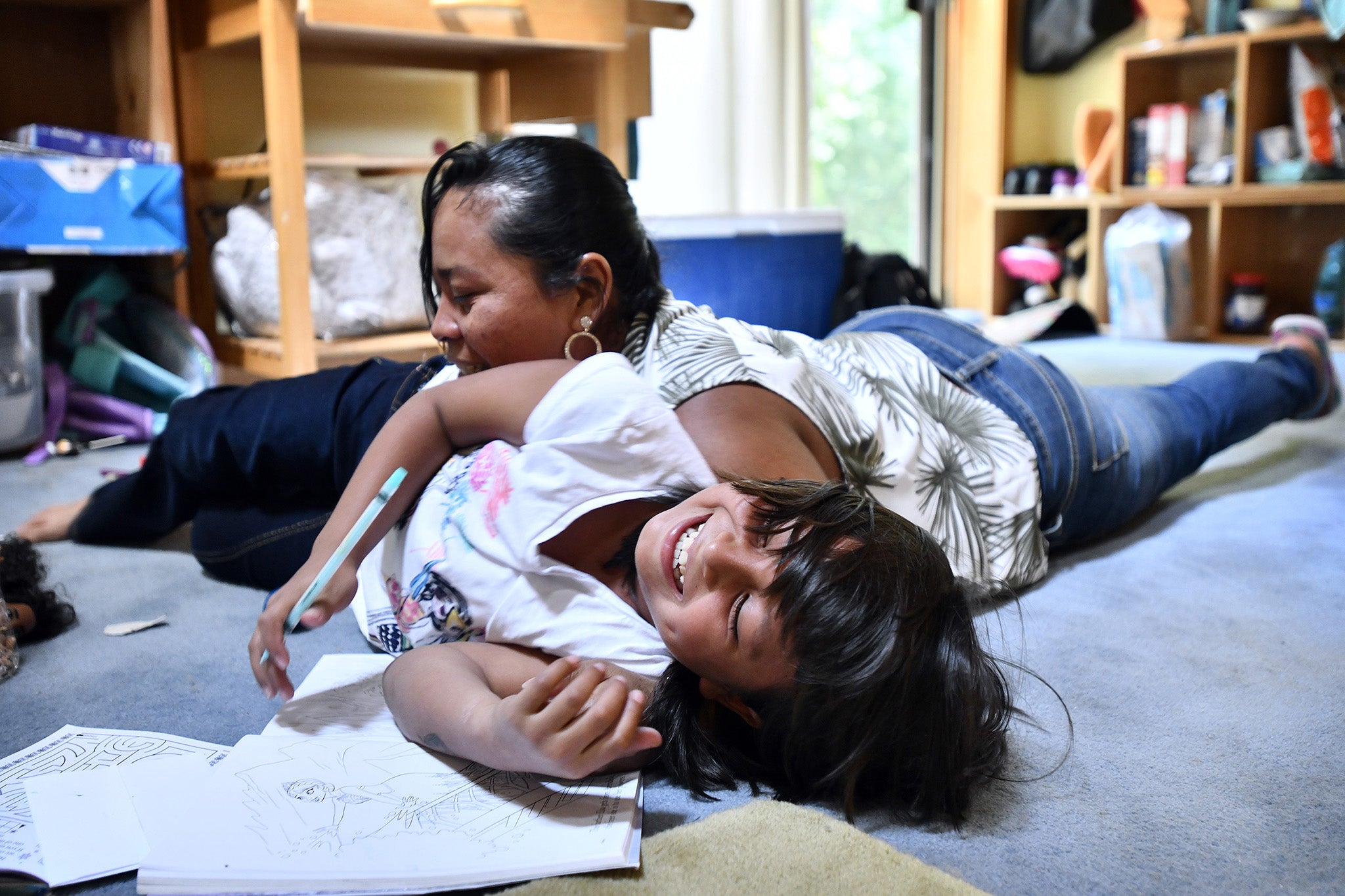
Her mother was delighted when Sandy raced outside last week after an invitation to play from the host family’s six-year-old boy. For an hour, the two rode bicycles and drew on the driveway in chalk.
On Friday, Sandy sits at the small table in the guesthouse, drawing and eating ramen as her mother meets with one of the family’s immigration attorneys.
In a black notebook, Sandy draws her new home and the path that connects it to the house of their host family. She colours the clouds blue and the sun bright yellow. Beneath one house, shaded purple and pink, she writes the name of the host family. Beneath the other: Sandy.
But when her mother draws a bird near the clouds using a black pen, Sandy seems to recoil.
“Tell the bird not to touch,” she says.
Now she opens a Frozen colouring book to a picture of Elsa hugging Anna and begins to translate the caption into Spanish.
“It says ‘Elsa and Anna are sisters and friends’,” she reads slowly. “They’ll never be separated again.”
When it comes to her own family, Sandy isn’t so sure. She thinks of the shelter every day. And when her mother doesn’t immediately fill out forms – for school, for healthcare, for asylum – the girl worries that it is she who will be punished; that she will be sent back to the shouting and the rules and the room where she had spent so many hours alone.
“Me van a regresar?” Sandy asks the attorney, Brittanie Allen. “Are they going to send me back?”
“No,” Allen replies firmly.
“See?” says Gonzalez-Garcia. “Did you hear?”
“She said yes,” Sandy insists.
“You’re never going to go back there again,” Allen promises.
“No,” the girl agrees quietly.
Join our commenting forum
Join thought-provoking conversations, follow other Independent readers and see their replies
Comments